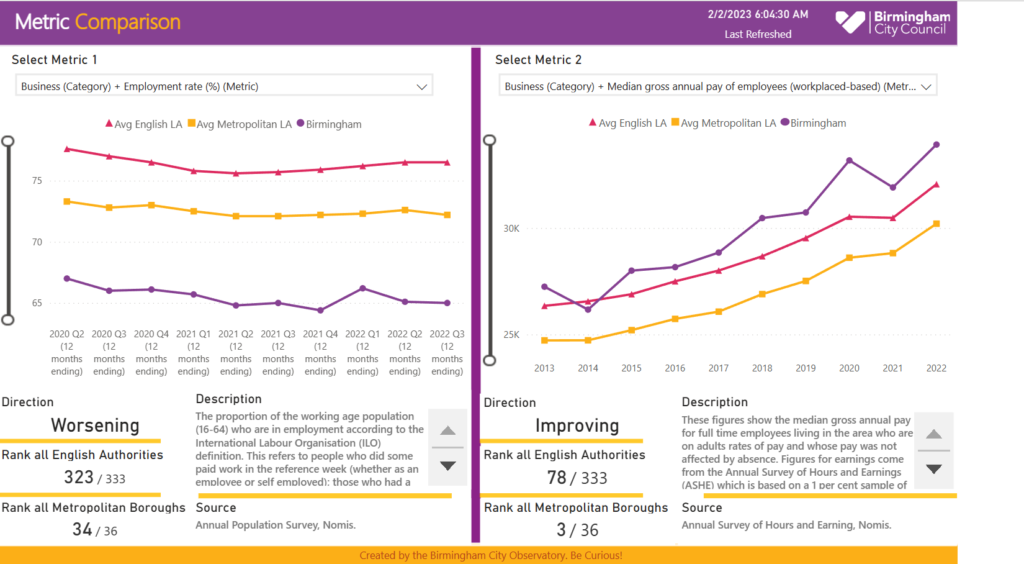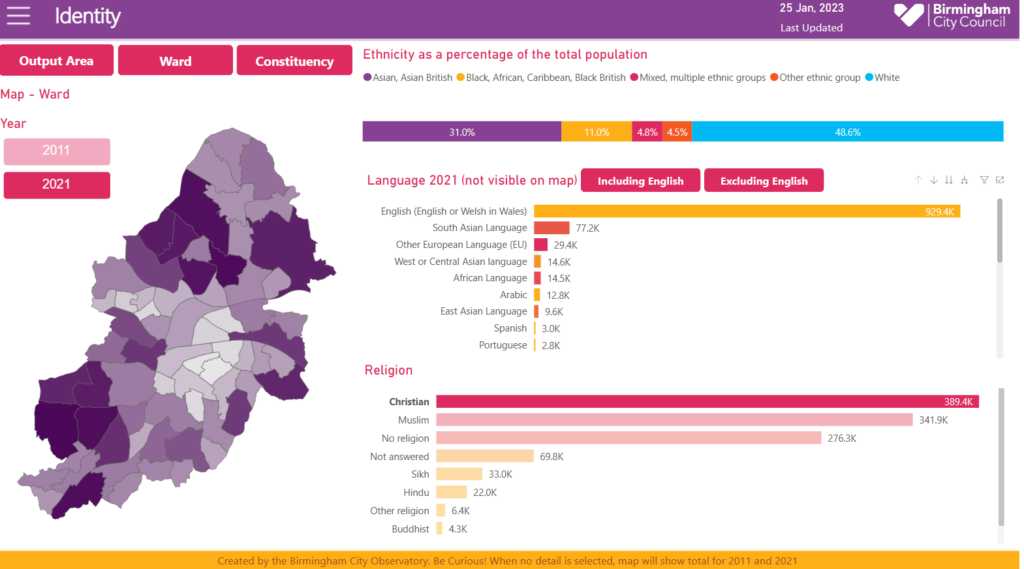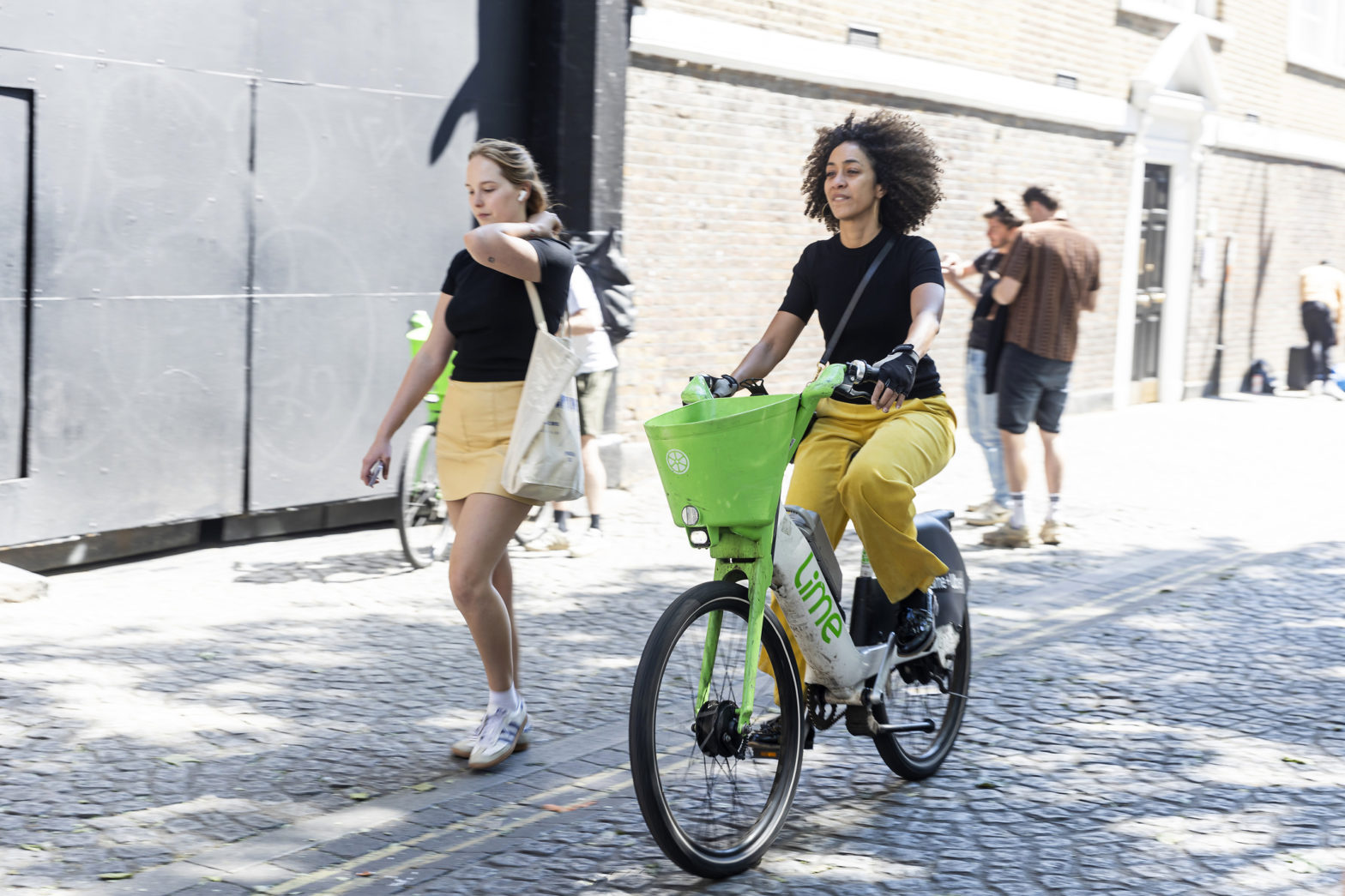
Photo: Ilmatar | Dreamstime.com
Birmingham’s open data observatory focuses on outcomes
06 February 2023
by Sarah Wray
With a new City Observatory, Birmingham in the UK has relaunched its open data effort from the ground up.
The platform aims to increase transparency and drive evidence-based collaboration around core issues such as the cost-of-living crisis, climate action, and inclusive growth. A new team has been created to manage the observatory.

Birmingham’s previous open data portal, the Data Factory, was launched in 2014, but it had “fallen by the wayside” in terms of development and being kept up to date and has now been replaced by the new City Observatory.
Richard Brooks, Director of Strategy, Equality & Partnerships at Birmingham City Council, told Cities Today: “We’ve effectively completely relaunched it and it’s easier to think of it as a new thing rather than a revision.”
The new approach aims to connect data and insights to better outcomes and bring together partners from across the city.
“We have done quite a lot of thinking about the relationship between publishing data and people’s housing conditions being better or to employment rates rising or more people getting the help that they need that keeps them out of using statutory social care services, for example,” Brooks says.
Single version of the truth
The observatory includes a curated selection of initial datasets and interactive Power BI dashboards.
The City Outcome Indicators dashboard shows how the city is performing in strategic areas such as health, employment, education, the climate emergency, housing and infrastructure. It displays the status, direction of travel and a national comparison on everything from the employment rate and average anxiety rate to deployment of electric vehicle charging infrastructure and percentage of adults who walk regularly.
“A lot of conversations can get bogged down in arguments about what the facts are or what the right measure is for things like unemployment or educational outcomes. We wanted to provide a single version of the truth,” Brooks comments.

The Census Dashboard allows users to explore and visualise Census data in multiple ways, to see what is changing over time, and to compare Birmingham to other cities and neighbouring areas.
This includes demographic trends across the 1.1 million population as well as detail such as how people travel to work by area and the concentration of ethnic and religious communities throughout Birmingham.
Brooks said this allows the city and others to think about issues such as whether they’re sufficiently engaged with community organisations in particular areas or about the distribution of facilities like food banks or transport.

Cost of living
Another goal of the platform is to inform decision-making on operations, policy and strategy.
The financial resilience dashboard – which incorporates Mosaic data from credit-scoring agency Experian as well as information on deprivation, fuel poverty, benefits, and children in financially vulnerable households – ranks the relative financial resilience of Birmingham’s 69 wards from one to five.
The layered map shows where people are most exposed to cost-of-living pressures.
“This means we can target the outreach for our benefits, help and advice services and we can geographically target access to warm spaces or support for food banks,” says Brooks.
Previously, this type of analysis would have been much more difficult: “We would have had to commission the work, then someone would have done some analysis for internal decision-making and, frankly, it would have then disappeared as most data analysis does in public service organisations,” Brooks explains.
“But the big difference here is that we published it and it’s open to scrutiny. Anyone can just go online and have access to it.”
The council also plans to publish data on organisational performance to the observatory.
“The intention is to make our performance public so we can use that to evaluate our own performance and share the same data with people externally as we’re using internally,” he says.
Increasing collaboration
Brooks is clear that key to the success of the observatory will be collaboration beyond the council.
“The big challenges in the city can only be met by its partners too,“ he says. “It’s not one organisation’s job to increase employment rates. In an environment as complex as Birmingham, lots of organisations have to contribute to that challenge.”
External organisations can also use the data to meet their own goals.
“We want the National Health Service to use the data, the Department for Work and Pensions, the voluntary community sector, the private sector, and we anticipate them generating value from it that is not captured by the council,” says Brooks.
“We want to allow datasets to be combined to create new insights, to create new value, and we want to share data to support a community of data users across the city.”
This means also drawing in more partners willing to share their data to the observatory.
Brooks notes that the pandemic highlighted the benefits of data collaboration and the value of different types of data, such as anonymised, aggregate mobility data on how people move around, credit card spending trends and supermarket data on shopping habits.
“There are massive lakes of data out there which are relevant to solving and making progress with social challenges,” he says. “It’s a journey but it’s very important that we do this in a safe way, which protects people’s privacy and data safety.”
Birmingham is now developing a data charter to formalise these principles.
New tools and capabilities and falling costs as well as fresh thinking could see cities like Birmingham take open data to a new level.
“It’s just the start,” Brooks says. “We’ll get things wrong, we’ve got a long way to go on things like engagement and development. Lots of people have started enthusiastically down this path but we are committed to it for the long term and we are determined to engage, listen to feedback and improve as we develop.”









